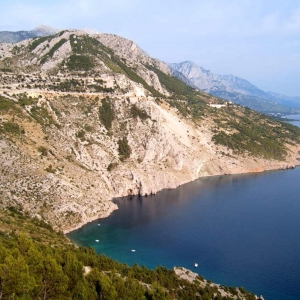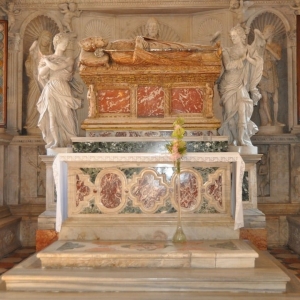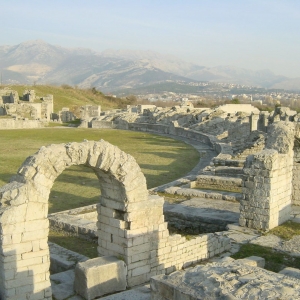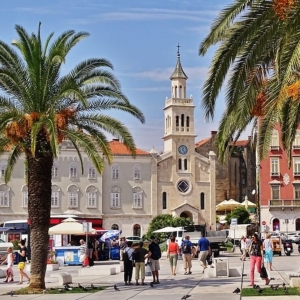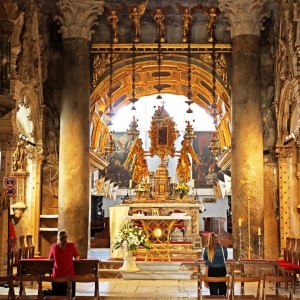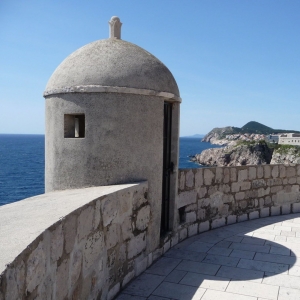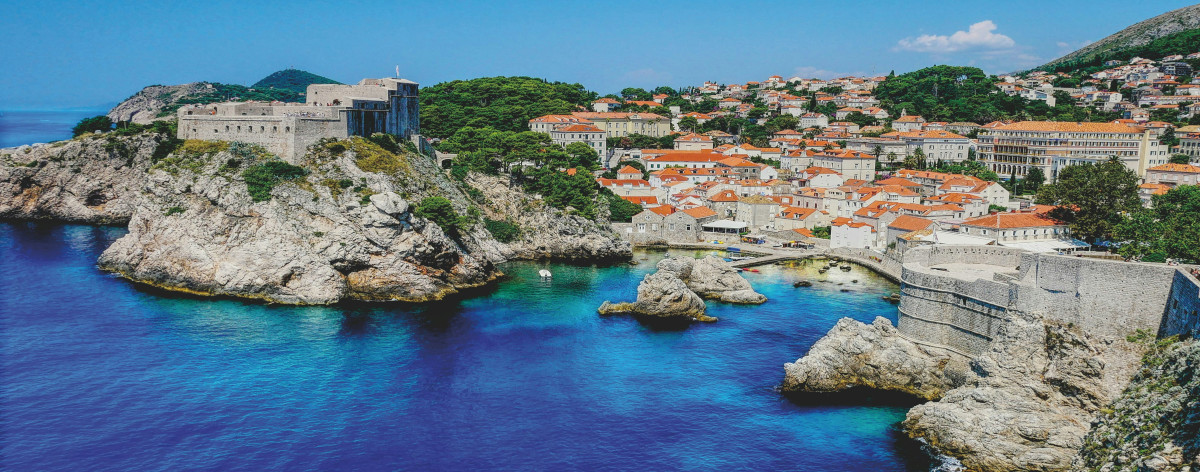
Historic Dalmatia
The Archaeology and History of coastal Croatia and Montenegro
Classical History and Archaeological ToursGeneral History Tours
Historic Dalmatia
The Archaeology and History of coastal Croatia and Montenegro
Classical History and Archaeological ToursGeneral History Tours
Your Holiday Essentials
14th - 22nd May 2026
(9 Days)
3/4-star hotels, meals as indicated, drinks with dinner, all entrance fees, tour manager and expert historian throughout, all internal travel, optional travel from UK
Expert Historian: Dr Filip Budić
Prices:
Standard price: £3,825
Incl. travel from UK: £4,275
Room sole occupancy supplement: £450
Non-refundable deposit: £850
Booking open
|
|
Tour Introduction
On this 8-night and 9-day tour we explore the rich archaeology and history of Dalmatia in an exciting journey from the historic town of Split in Croatia to Bar in Montenegro. Along the way we enjoy visits to sites representing a smörgåsbord of periods including a Greco-Roman city, Roman mosaics, medieval churches, monasteries and castles, elaborately carved medieval stećci (gravestones), Venetian and Ottoman walled towns, stately 19th century palaces and relics from the region’s bitter wars of the 1990s. We enjoy the stunningly beautiful cities of Split and Dubrovnik and learn about the brief but culturally efflorescent period of Montenegrin independence in the 19th century at the former Royal capital of Cetinje. Dalmatia is a region better known for its gorgeous coast – which we fully enjoy on this tour – but its intriguing history is relatively unknown in Europe. This is a tour to learn more about this fascinating area in the company of our expert historian
Background
From the 6th century BC a group of tribes known to the Greeks as the Illyrians inhabited the Western Balkans. In 181 BC one of these known as the Dalmatae broke away from their Illyrian overlords and soon attracted the attention of the growing power of Rome. By 33 BC the Dalmatae had been defeated by the Romans who soon extended their rule over the area we now know as Dalmatia (named after the tribe). The Roman province of Dalmatia, with its capital at Salona, covered the coast and part of the interior of modern Croatia, and flourished until the 5th century AD when it came under the Ostrogothic Kingdom. The region became part of the Eastern Roman Empire in 545 AD but growing Slav incursions soon reduced this territory to a narrow coastal sliver. The Slavs formed the Kingdom of Croatia and other Slavic principalities and the area has remained Slavic in culture and language ever since. During the Middle Ages the area was fought over by Byzantium, Hungary, Venice and the Ottoman Empire before becoming part of Hapsburg domains in 1527. Apart from a brief resurgence of nationalism in the 19th century – such as the independent Kingdom of Montenegro (1878–1914) - the region remained under Austro-Hungarian influence until 1918 when it became part of the Kingdom of the Slovenes, Croats and Serbs, then the Kingdom of Yugoslavia. Its existence as communist Yugoslavia came to an end when Croatia declared independence in 1991 triggering a bitter war for survival. Montenegro declared its independence in 2006.
Highlights
• Stay in the beautiful coastal cities of Split and Dubrovnik
• Admire the UNESCO World Heritage sites of Dubrovnik Old Town, the Cathedral of St. James in Šibenik and Stari Bar walled town
• Visit the amazing Greco-Roman city of Salona, birthplace of Diocletian
• Marvel at the more than 100 stećci carved gravestones at Crljivica
• Visit the beautiful coastal town of Trogdir
• Enjoy a relaxing tour through history along the stunningly beautiful Dalmatian coast
What's Included
- 3 & 4 Star Hotels
- Meals as indicated in the itinerary
- Two drinks i,e wine or beer at each dinner and a welcome drink on first evening
- Modern, comfortable, air-conditioned coach
- Expert historians throughout providing a daily variety of talks, presentations and Q&A
- Dedicated Tour Manager
- Entrance fees for sites included in itinerary
- Return flights from London (optional)
- The company of like-minded travelers
- Tour information booklet
- Helpful and friendly travel advice
Itinerary
Day 1. Arrival: fly London Heathrow to Split or join the tour at the hotel. Pre-dinner drinks and introductory talk. Hotel in Split – 3 nights. (D).
Day 2. Split and Diocletian’s Palace: a day spent in the beautiful old town of Split built in and around the sturdy walls of Diocletian's Palace, completed in 305 AD. The town grew up around this colossal palace-fortress and is now a unique fusion of Roman, Byzantine, Venetian and Austro-Hungarian architecture. We visit the cavernous underground passages which reflect the true scale of the palace as well as the St Domnius Cathedral and Archaeology Museum. (B, D).
Day 3. Šibenik, Trogdir and Salona: today we drive to Šibenik to visit the Cathedral of St. James, an exquisite example of 15th and 16th century architecture and UNESCO World Heritage Site. We then move to the lovely medieval town of Trogdir where we pause for lunch and enjoy a walk around the historic centre. With its origins in Illyrian times, and with traces of Greek and Roman occupation, this is a place alive with the multilayered history of Dalmatia. Our day concludes at the ancient city of Salona, founded by the Greeks in the 3rd century BC and later birthplace of Diocletian. Here we admire the city walls, basilica, amphitheatre, baths and water system capable of supplying 40,000 people. (B, D).
Day 4. Crljivica and Dubrovnik: we leave Split and drive up to the medieval fortress of Klis in its commanding position over the coastal hinterland below. Klis became the seat of power for several Croatian kings and in 1242 was the site of a huge Mongol defeat by a Hungarian army. We continue inland to Crljivica where we marvel at dozens of intricately carved medieval stećci (gravestones), arguably the best example of these in the Balkans. We continue to Dubrovnik through some of the most stunning scenery in the region. Hotel in Dubrovnik – 2 nights. (B, D).
Day 5. Dubrovnik and Lokrum Island: we spend the morning on a walking tour of Dubrovnik’s stunning old town enjoying the fabulous architecture set within a truly breathtaking location. Surviving earthquakes, Napoleonic occupation and Yugoslav army shells the old town has a treasure of attractions including the Italianate Sponza and Rector’s Palaces. Our tour will be augmented by visiting the Archaeological Museum. The day is concluded by a short boat trip to the island of Lokrum where we admire the ruins of the Benedictine Abbey and enjoy a superb view of Dubrovnik from the fort. This is a perfect place to relax and enjoy a well-earned swim. (B, D).
Day 6. The Bay of Kotor: crossing into Montenegro the tour continues with stops at the historic towns of Herceg Novi and Kotor. The drive around the Bay of Kotor is rewarded with expansive views in every direction and we are able to appreciate the bay’s important role as a perfect naval base. At Kotor we admire the massive fortifications built when the town was part of the Venetian Republic between 1420 and 1797. Continue to hotel near Budva – 2 nights. (B, D).
Day 7. Medieval Stari Bar and Lake Skadar: we travel down the beautiful coast road to the old city of Stari Bar, the most important medieval site in the Balkans, and a UNESCO World Heritage Site. First mentioned in the 10th century the town has Late Gothic, Renaissance, Baroque and Oriental architectural elements. Wandering around the deserted ramparts, bastions, towers and citadel is a poignant reminder of the town’s civic prowess. We have lunch in Bar before driving to the lovely Lake Skadar where we take a short boat trip to the island monastery of Beška. Here we view the St George and St Mary churches built in the 14th and 15th centuries by the Serbian noble Đurađ II Balšić and his widow Jelena Lazarević, respectively. Return to hotel. (B, D).
Day 8. Cetinje: we drive to the historic Montenegrin capital at Cetinje where we admire the late nineteenth century buildings. Many of these were foreign embassies from when the town was capital of an independent Montenegrin nation between 1878 and 1914. We move back to the Bay of Kotor and pause at Risan where we view the fabulous Roman mosaics dating from the 2nd century AD. Return to Dubrovnik and our hotel for the night. (B, D).
Day 9. Dubrovnik and depart: on our last day we ascend by cable car to enjoy a spectacular view over Dubrovnik from Srđ Hill. This was the site of one of the fiercest battles in the Croatian Independence War (1991-95) and we visit the small museum here which outlines these events. Returning to the old town we take our transfer to Dubrovnik airport for our flight back to London Heathrow (or you may want to extend your stay in the region). (B).
Recommended Reading List
- Adriatic: A Two-Thousand-Year History of the Sea, Lands and Peoples
- Croatia: A History from the Middle Ages to the Present Day
- The Balkans: From the End of Byzantium to the Present Day

Dr Filip Budić
Dr Filip Budić studied History and Archaeology (BA, MA, PhD) at the University of Zagreb in Croatia and currently serves as Assistant Lecturer in the Department of History at the University of Zagreb, Croatia. His field of expertise is ancient history, particularly colonisation, warfare, diplomacy, and colonial encounters in the Adriatic area. Filip has participated in multiple excavations and field surveys in Croatia, Greece, Germany, Israel, Kosovo, the Russian Federation, and Turkey. He is also a licensed tour guide with nearly ten years of experience guiding at sites in Croatia, Greece and Turkey.
Your Holiday Essentials
14th - 22nd May 2026
(9 Days)
3/4-star hotels, meals as indicated, drinks with dinner, all entrance fees, tour manager and expert historian throughout, all internal travel, optional travel from UK
Expert Historian: Dr Filip Budić
Prices:
Standard price: £3,825
Incl. travel from UK: £4,275
Room sole occupancy supplement: £450
Non-refundable deposit: £850
Booking open
|
|

